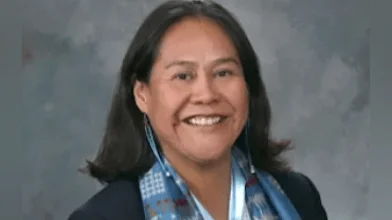Every 10 years, based on the Census, Commission Districts are realigned to balance the population that each commissioner represents based on the growth or decline of the population within a county.
Much of the work falls at the county level. Sandoval County, for example, contracted for a demographer through a competitive process to propose several maps to be considered for the Commission to approve. The Commission has reviewed multiple re-districting plans and is tasked with evaluating and selecting which map would best represent the residents of the county.
The Commission has and continues to listen to comments from the public including residents of the towns, villages and neighborhoods or communities of common interest and Native American pueblos.
The Supreme Court recognizes a set of general principles that guide districting, often referred to as “traditional districting principles.” These traditional principles that are at the heart of a redistricting process include:
- Compactness – a measure of a districts geometric shape;
- Contiguity – all parts of a district must be connected;
- Adhering to pre-existing political boundaries - discourages smaller political subdivisions such as towns and cities from being split between districts;
- Preserving Communities of Interest – encourages the inclusion of like-minded communities within whole districts without splitting them;
- Preserving Cores of Prior Districts- ensures that redistricting does not introduce radical changes to map schemes.
Districting is about the numbers of people represented by each of the five commission districts. The population of Sandoval County is 148,834; an ideal sized district is 29,767. A +/ – 5% deviation is allowed. Redistricting Plans should comply with all the traditional districting principles and have towns, villages and neighborhoods or communities of common interest and Native American pueblos included in the same districts as much as logistically possible.
Sandoval County grew by 17,213 people from 2010 to 2020. Rio Rancho, the largest City in the county grew by 16,659, which is 97% of the growth in the County. For the residents of Rio Rancho to be fairly represented on the Sandoval County Commission, three commission districts should be within Rio Rancho’s political boundaries.
A redistricting plan that complies with only some of the traditional districting principles and fails in compliance with others would not fulfill the Supreme Court’s principles.
The federal Voting Rights Act (VRA) of 1965 stands for the idea that every voter should have a chance to cast a meaningful ballot and deems a district map unlawful if it results in the dilution of the voting power of any racial, ethnic, or language minority group. The two most common techniques used to dilute the political power of racial, ethnic, and language minorities are “cracking” and “packing.” “Cracking” refers to fragmenting concentrations of minority populations among multiple districts to ensure that they have no effective voice in any one district. “Packing” refers to concentrating as many minorities as possible in as few districts as possible to limit the total number of districts in which they have influence.
Packing is not an issue in Sandoval County because the Native American Community is 11% of the County, and it is not feasible to pack a district so that Native Americans are 80% of any district, which is the standard for packing.
There are many different elements that must be considered, such as not changing geographical orientation or creating ineligibility for a currently serving Commissioner to seek re-election.
These same principals apply to State redistricting. The goal of redistricting is improving representation and ensuring cities, towns and villages are contiguous for building on synergies within a community.
Many of the proposed state plans violate ‘Adhering to pre-existing political boundaries’, ‘Preserving Communities of Interest’ and ‘Preserving Cores of Prior Districts’.- This principle aims to ensure that redistricting does not introduce radical changes to map schemes.
The only map presented by the Citizen Redistricting Committee for legislative review that keeps Rio Rancho together in one congressional district is Map A. The other maps split Rio Rancho and would divide a vibrant city and reduce the voice of New Mexico’s fastest-growing city. That would cause Rio Rancho and Sandoval County to split between Congressional Districts 1 and 3.
Dave Heil is the Sandoval County Commission Chairman, Past Chair Rio Rancho Planning and Zoning, Business leader and Real Estate Investor for over 40 years.









